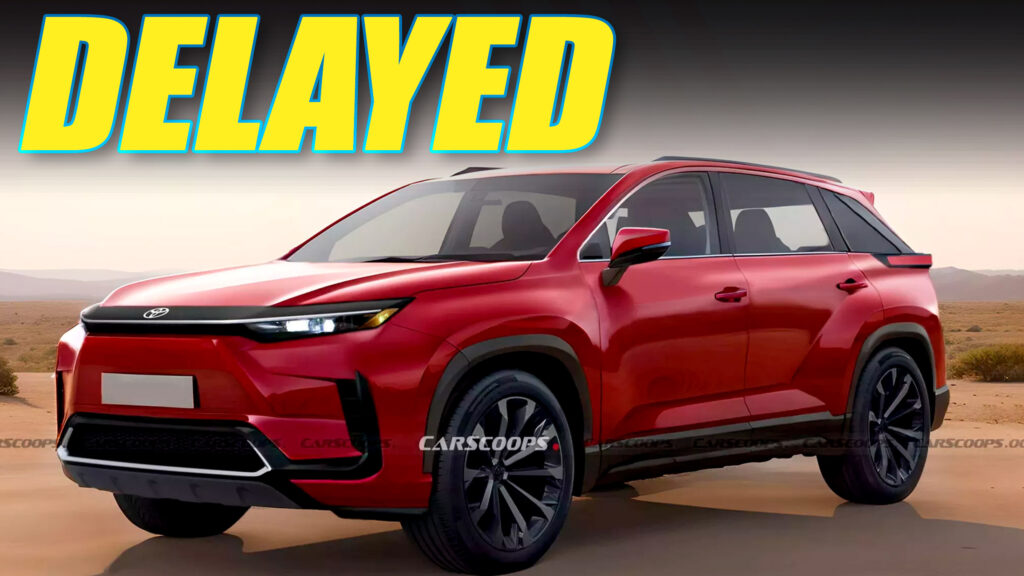News
Polestar’s Leadership Shift Signals Hope Amid Sales Decline

Sales of the Polestar 2 have fallenAppointment of a former CFO to lead the start-up tells all about its situation but there's hope on the horizon
Polestar’s announcement in August that it was switching CEOs provided a window on the ailing condition of the electric car start-up spun out of Volvo.
The CVs of the two CEOs were instructive. Out went former design boss Thomas Ingenlath and in came former chief financial officer Michael Lohscheller.
Ingenlath had been promoted from his role as head of design of Volvo in 2017 to form a new electric subsidiary with aesthetics at its core.
Seven years on, Polestar products have the looks and quality to match those of a mature car company. But as the appointment of industry veteran Lohscheller suggests, the company’s finances are as bad as any start-up's.
Lohscheller, former CFO and then CEO of Opel, has become a go-to guy for embattled start-ups looking for solid guidance from an wily old industry hand. Since leaving Opel in 2021, he spent seven months as global CEO of Vietnamese brand Vinfast, then 19 months as president and CEO of infamous fuel cell hopeful Nikola.
Lohscheller’s fast cycling between jobs suggests he’s either become a short-term turnaround specialist or didn’t gel with those particular start-ups. Either way, he’s got insight into both ends of the automotive spectrum.
Polestar has suffered as badly as any electric start-up without actually hitting the buffers, Fisker-style. It got so bad that in February, Volvo decided it had to reduce its financial exposure to Polestar by cutting its stake from 48% to 18% and handing over the balance of shares to parent Geely.
Then in May, Polestar received a deficiency notice from New York tech-focused stock exchange Nasdaq for not having filed its annual report for the previous year on time. It eventually filed in mid-August, showing a net loss of $1.2 billion (£0.9bn) on revenue of $2.4bn (£1.8bn).
Sales of its single vehicle – the 2 electric saloon - have fallen, even in the UK where it competes in the EV-friendly corporate market. Registrations to the end of August in 2024 stood at 3863, down from 8981 the year before.
More bad news followed in July, when Polestar received a warning that its shares had fallen below the minimum $1 worth and faced delisting from Nasdaq. In August, the company’s value based on its share price was just $1.14bn (£0.87bn), down from a high in 2022 of more than $21bn (£16bn).
“Material uncertainty about Polestar's ability to continue as a going concern persists,” the company said in its delayed financial report.
Polestar could have fallen into the same doom spiral as Fisker but it is far more fortunate in that it benefits from the support and influence of parent Geely. In February, Polestar announced that it had secured $950 million (£725m) in funding from a range of international banks, keeping the money flowing until such time as it can reliably generate its own.
It also took the chance to shake up its leadership, both executive and non-executive. Along with the exit of Ingenlath, Polestar announced the retirement of chairman Håkan Samuelsson, a former CEO of Volvo, and installed in his place former Skoda CEO and ex-VW heavyweight Winfried Vahland. Meanwhile, a new chief financial officer, Jean-François Mady, was appointed from Stellantis.
The company has also been cutting costs in part by reducing headcount by 500 last year through the means of a hiring freeze. That might not sound a lot compared with, say, Volkswagen but Polestar has only 2523 employees, according to the annual report.
The reason Polestar has so few workers is that it runs what Geely calls an ‘asset light’ model, whereby it pays other Geely group companies to develop platforms and technology, and also build its cars. Geely group brands tend to have a speciality when it comes to vehicle development, which they can then use to offset their bills by selling to other parts of the company.
Polestar’s 650-strong development team, for example, focuses on bonded aluminium architectures, high-power electric motors, bi-directional compatible battery packs and in-car software development.
Meanwhile, Polestar pays Volvo to build its new Polestar 3 large SUV, and Zeekr to build the new Polestar 4 coupé-SUV in China. It also pays a licence fee to use Geely platforms, such as Geely’s PMA-1 platform and GEEA2.0 electrical architecture for the 4. The upcoming Polestar 5 sports saloon, planned for 2025, will use Zeekr's new ZEEA2.5 architecture.
Theoretically, this method cuts Polestar’s development bill and speeds up the creation of new models. The access to Geely’s global network means it can dodge tariff-related problems that other Chinese rivals such as Nio and Xpeng can’t yet – for example, making the 3 in Volvo’s US plant and eventually the Renault-Geely factory in South Korea for the 4.
Polestar appears to be turning a corner. Shares in the company rose in early September to levels not seen for a year, valuing Polestar at the end of September around three times its August figure. On 17 September, Polestar announced it had been told by Nasdaq that the share price was high enough to lift the threat of delisting.
Perhaps the biggest boost for the brand is that it now sells three models instead of just one. The pricier 4 and 3 will help cement the brand’s premium positioning, albeit one that brings the likes of Porsche into the competitor pool, along with BMW, Audi and Mercedes-Benz. The company is targeting positive cash flow (a measure of profitability) for late next year.
Polestar is not about to run out of cash, with the $950m injection earlier this year as well as Volvo’s promise to extend its credit facility to the company to $1bn to the end of 2028. Geely’s network of companies, meanwhile, continue to innovate in platforms, electric tech and manufacturing. Geely’s heft should also secure Polestar good deals on batteries.
With the new management team in place, Polestar can now cross the bridge “from a start-up to an established, leading player”, outgoing chair Samuelsson said in August. In doing so, it’ll be hoping the bad news bears of 2024 will have been soundly chased away.
Toyota’s Three-Row Electric SUV Faces Delays and Design Changes

Geo Dirt Tracker Concept Heads to Auction: A Nostalgic Automotive Relic
Lincoln’s Sales Surge: Aviator and Nautilus Drive Record Growth

Vauxhall Slashes Prices on Astra and Corsa EVs to Boost Affordability

Vauxhall has taken up to £4675 off the electric Astra and £4150 off the top-spec CorsaNearly £5000 off a top-rung Astra Electric as the brand seeks to make its EVs more affordable
Vauxhall is continuing its push to make its electric cars more affordable by slashing the prices of the Astra and Corsa EVs.
The biggest cut is for the range-topping Ultimate-trim version of the Astra Sports Tourer, which has been reduced by £4765 to £40,695. The electric estate’s entry-level trim, Griffin, now starts from £36,195, down by £1000.
Meanwhile, the Astra Electric hatchback has been discounted by up to £3865, with the Ultimate trim falling to £39,385. The middle-rung Design and GS versions have been reduced by £2850 and £2905 respectively, while Griffin remains priced from £34,995.
Similarly, the Corsa Electric’s starting price is unchanged, at £26,895 – making it one of the UK’s cheapest electric cars – but the more costly grades have received big reductions. Design and GS are £3400 and £2850 cheaper respectively, while range-topping Ultimate has been reduced by £4150.
The cuts come shortly after Vauxhall announced that the new Frontera SUV would be priced identically in petrol and electric form, from £23,495. In April, it also reduced the starting price of the Mokka Electric by £7115 to £29,495.
Vauxhall managing director James Taylor recently told Autocar that “optics” were a key issue in the battle to boost electric car sales.
Referring to the public reaction surrounding the top-rung Corsa’s previous price of £38,585, he said: “One of the challenges we have all faced with electric vehicles is that you end up with a comparison between a [74bhp] base-spec car and a [154bhp] long-range [EV].
“It’s a bit like back in the day when you would have Design as the entry to the range and a [sporting] VXR with 150bhp, but you wouldn’t expect those two things to be the same price.
“But obviously in the optics of how people compare and contrast, it does make electric look very expensive. And that’s why we launched the Yes special edition [EV at £26,840].”
Meanwhile, Ford of Britain managing director Lisa Brankin has called for VAT on electric cars to be halved because “we are not seeing customer demand for EVs”.
Brankin added: “We need incentives to drive demand in the consumer market.”
